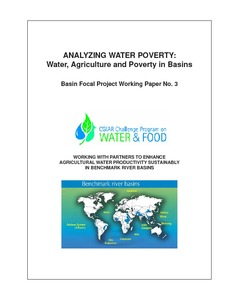Understanding the links between agriculture and health: Fish and health
"Agriculture is the main source of livelihood of the majority of people affected by HIV and AIDS globally, and it is being progressively undermined by the disease. In Sub-Saharan Africa AIDS is affecting the rural landscape in ways that demand a rethinking of development policy and practice, and parts of South Asia may soon face a similar situation.... There is clearly tremendous scope for agricultural policy to become more HIV-responsive, both to further AIDS-related objectives and to help achieve agricultural objectives. Yet there are no magic bullets.










